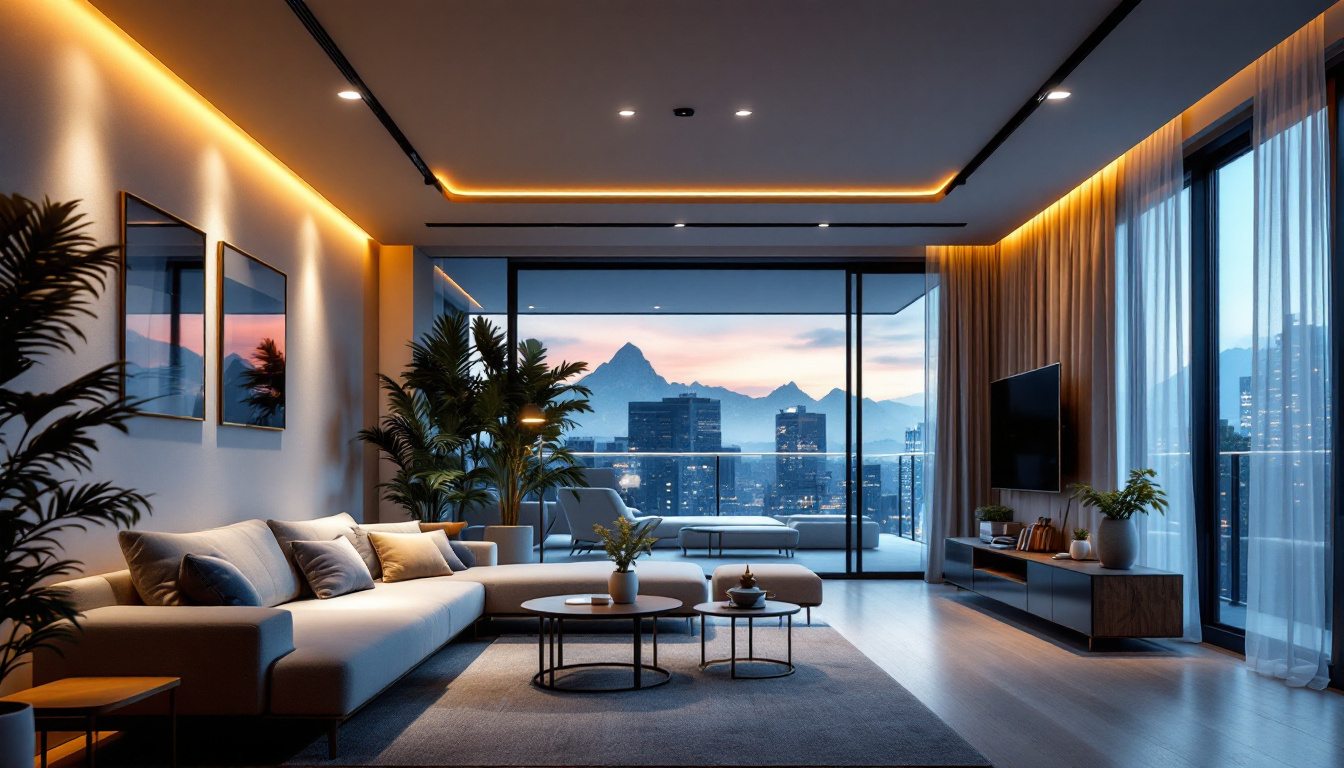
The invention of the lightbulb marked a significant turning point in the history of illumination. Before the advent of electric light, people relied on candles, gas lamps, and oil lamps to light their homes and workplaces. The transition to electric lighting not only transformed the way spaces were illuminated but also paved the way for modern electrical systems.
Lightbulbs have undergone numerous innovations since their inception, evolving from rudimentary designs to the sophisticated LED technology available today. This evolution has not only improved efficiency but has also influenced the cost dynamics for lighting contractors significantly.
The journey toward the modern lightbulb began with various experiments in creating electric light. Early inventors explored different materials and designs, leading to the development of incandescent bulbs. These bulbs utilized a filament that glowed when electricity passed through it, providing a warm, steady light.
As technology progressed, the introduction of gas-filled bulbs and eventually fluorescent lighting brought about a new era of energy efficiency. Each innovation served to reduce energy consumption and enhance the lifespan of lighting solutions, which is crucial for contractors managing long-term projects. The invention of the tungsten filament in the early 20th century marked a pivotal moment, as it allowed for brighter and more durable bulbs, further solidifying the incandescent bulb’s place in households and businesses alike.
With growing concerns over energy consumption and environmental impact, the lighting industry shifted focus toward more energy-efficient solutions. Compact fluorescent lamps (CFLs) and light-emitting diodes (LEDs) emerged as viable alternatives to traditional incandescent bulbs. These technologies not only consume less power but also have a longer lifespan, which translates to lower replacement costs for contractors.
Understanding these advancements allows lighting contractors to offer clients solutions that are not only cost-effective but also environmentally friendly. This knowledge can significantly influence purchasing decisions and project proposals, making it essential for contractors to stay informed about the latest developments in lighting technology. Moreover, the integration of smart lighting systems has added another layer of sophistication, enabling users to control their lighting remotely and customize settings to fit their needs. This evolution not only enhances user experience but also opens new avenues for contractors to provide innovative solutions that cater to the growing demand for smart home technologies.
For lighting contractors, understanding the financial implications of different lighting technologies is crucial. The initial investment in lighting solutions can vary greatly depending on the type of bulb chosen. However, the long-term savings associated with energy-efficient options can significantly offset these upfront costs. In addition to energy savings, contractors should also consider the potential for reduced maintenance costs, as many modern lighting solutions require less frequent replacement and upkeep, further enhancing their financial appeal.
Contractors who are knowledgeable about the cost-benefit analysis of various lighting options can provide clients with informed recommendations. This not only builds trust but also positions contractors as experts in their field, ultimately leading to more business opportunities. Furthermore, by demonstrating a thorough understanding of the financial landscape of lighting choices, contractors can differentiate themselves from competitors, potentially attracting a broader client base that values expertise and reliability in their service providers.
When evaluating lighting options, it is essential to consider both initial costs and long-term savings. While incandescent bulbs may be cheaper to purchase, their high energy consumption and shorter lifespan make them a less economical choice over time. In contrast, LED bulbs may have a higher upfront cost but offer substantial savings on energy bills and replacement costs. Additionally, the longevity of LED technology means fewer disruptions for businesses, which can be particularly important in commercial settings where consistent lighting is critical for operations.
Lighting contractors can help clients understand these trade-offs, emphasizing the importance of investing in quality lighting solutions that will yield long-term benefits. By presenting a clear picture of potential savings, contractors can facilitate smarter purchasing decisions for their clients. They can also provide case studies or examples of previous projects where clients have experienced significant savings, making the financial argument even more compelling and relatable.
Many regions offer rebates and incentives for businesses and homeowners who choose energy-efficient lighting solutions. These programs can significantly reduce the overall cost of lighting projects, making it more appealing for clients to invest in modern technologies. Lighting contractors should stay updated on available rebates and educate their clients about these opportunities. This proactive approach not only helps clients save money but also positions contractors as valuable partners in navigating the complexities of energy efficiency programs.
By incorporating energy-efficient solutions into their proposals, contractors can not only enhance the value of their services but also contribute to a more sustainable future. This approach not only benefits the environment but can also lead to increased customer satisfaction and loyalty. Additionally, as sustainability becomes a key focus for many businesses, contractors who prioritize energy-efficient lighting can align themselves with clients’ values, fostering long-term relationships built on shared goals for environmental stewardship and cost savings.
With a plethora of lighting options available, selecting the right solution for a specific project can be daunting. Lighting contractors must consider various factors, including the purpose of the space, aesthetic preferences, and budget constraints. Understanding the unique characteristics of different lighting technologies is essential for making informed choices. From incandescent to LED, each type of lighting has its own advantages and drawbacks, influencing not just the look of a space but also its energy consumption and maintenance needs.
By offering a comprehensive range of lighting solutions, contractors can cater to diverse client needs while ensuring optimal performance and efficiency. This versatility can set contractors apart in a competitive market, allowing them to attract a broader clientele. Additionally, providing options that include sustainable choices, such as solar-powered lights or energy-efficient fixtures, can appeal to environmentally conscious consumers, further expanding a contractor’s market reach.
Every lighting project has unique requirements that must be assessed before making a decision. Factors such as the size of the space, the intended use, and the desired ambiance all play a crucial role in determining the most suitable lighting solution. For instance, a retail environment may benefit from bright, vibrant lighting to enhance product visibility, while a residential space may require softer, warmer tones for a cozy atmosphere. Furthermore, the layout and architectural features of a space can also dictate lighting choices; high ceilings might necessitate pendant lights or chandeliers, while narrow hallways could benefit from wall sconces to maximize illumination without overcrowding.
Contractors should engage with their clients to understand these requirements fully. By conducting thorough assessments and providing tailored recommendations, contractors can ensure that the chosen lighting solutions meet both functional and aesthetic needs. This collaborative approach not only builds trust but also empowers clients to feel involved in the decision-making process, leading to greater satisfaction with the final outcome. Additionally, incorporating elements such as dimmers or smart controls can enhance the versatility of the lighting, allowing clients to adjust the ambiance according to their preferences and activities.
The lighting industry is constantly evolving, with new technologies and trends emerging regularly. Staying informed about these changes is essential for lighting contractors who wish to remain competitive. This includes understanding advancements in smart lighting, which allows for greater control and customization of lighting solutions. The integration of IoT (Internet of Things) technology in lighting systems not only enhances user experience but also promotes energy conservation, as these systems can adapt based on occupancy or natural light availability.
By embracing new technologies and trends, contractors can offer clients innovative solutions that enhance their spaces while also improving energy efficiency. This proactive approach not only positions contractors as industry leaders but also fosters long-term relationships with clients who appreciate their expertise. Furthermore, attending industry expos, workshops, and webinars can provide valuable insights into emerging products and techniques, enabling contractors to continually refine their offerings and maintain a competitive edge in a rapidly changing market.
For lighting contractors, profitability is closely tied to the ability to offer efficient, cost-effective solutions. By understanding the intricacies of lighting technologies and their financial implications, contractors can maximize their profit margins while delivering exceptional value to clients.
Smart lighting choices can significantly reduce operational costs, making it easier for contractors to maintain competitive pricing while ensuring quality service. This balance is essential for sustaining a successful business in the ever-evolving lighting industry.
Energy management systems (EMS) are becoming increasingly popular in both commercial and residential settings. These systems allow for better control over energy consumption, enabling users to optimize their lighting usage based on specific needs. For contractors, integrating EMS into lighting projects can enhance the overall value of their services.
By promoting the benefits of energy management systems, contractors can position themselves as forward-thinking professionals who prioritize sustainability and efficiency. This not only attracts environmentally conscious clients but also opens up new avenues for project opportunities.
To remain competitive, lighting contractors should invest in ongoing training and education. This includes staying updated on the latest technologies, industry standards, and best practices. Knowledgeable contractors can provide valuable insights to clients, helping them make informed decisions about their lighting choices.
Furthermore, participating in workshops, seminars, and industry conferences can enhance a contractor’s expertise and network. This commitment to professional development can lead to increased credibility and trust among clients, ultimately contributing to business growth.
The evolution of lightbulbs has transformed the lighting industry, offering contractors a wealth of opportunities to enhance their services. By understanding the historical context of lighting technology and its financial implications, contractors can make informed decisions that benefit both their clients and their businesses.
As the industry continues to evolve, embracing energy-efficient solutions and staying informed about emerging trends will be crucial for contractors seeking to thrive in a competitive market. By prioritizing education, offering tailored solutions, and promoting sustainability, lighting contractors can position themselves for success in the future of lighting.
Ready to revolutionize your lighting projects with cost-effective, energy-efficient solutions? Look no further than LumenWholesale, where we provide contractors with the highest quality, spec-grade lighting products at unbeatable wholesale prices. Say goodbye to local distributor markups and hello to our extensive selection that meets rigorous industry standards. With free shipping on bulk orders, you can trust that you’re getting premium lighting at the best value — no hidden fees, no compromises. Elevate your lighting game and explore our wholesale lighting options today to bring unparalleled quality and affordability to every project.

Discover essential tools and expert advice tailored for lighting contractors in this comprehensive guide.

Discover the various types of recessed lighting and learn how to future-proof your lighting projects with innovative designs and energy-efficient solutions.

Discover how LED 4ft shop lights are revolutionizing modern lighting solutions with energy efficiency, durability, and superior illumination.

Discover the essential insights every lighting contractor needs to know about outdoor LED lights.